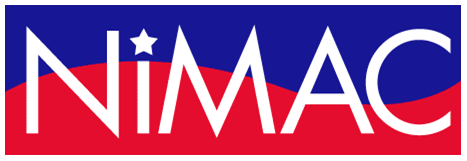The NIMAC & Digital Instructional Materials
Frequently Asked Questions (para español)
- What does “digital instructional materials” or “born digital” mean?
“Digital instructional materials” or “born digital” materials are materials distributed by the publisher in a digital format only. In other words, they are not hard copy printed textbooks but are materials distributed to schools in an electronic format.
- How does the Notice of Interpretation change what the NIMAC can accept?
The previous interpretation of the Office of Special Education Programs at the US Department of Education (OSEP) was that the NIMAC could only accept NIMAS files for materials that were published as hard copy books. The Notice of Interpretation clarified that IDEA 2004 does not prevent the NIMAC from accepting files for digital instructional materials, as long as these materials can be produced in valid NIMAS format.
- Is there now a blanket requirement for publishers to submit files for digital instructional materials?
No, the Notice does not change the mechanism for requiring NIMAS files from publishers. As established in IDEA 2004, the only mechanism to require NIMAS from publishers remains the purchase agreement or adoption contract. Customers still need to include the NIMAS requirement in the contract language when they purchase new materials. The National AEM Center at CAST is working on sample contract language for states and districts and this should be posted on their website soon.
- I am a publisher that offers its curriculum both as hard copy books and in a digital format. If I have supplied NIMAS files for the hard copy books, do I need to provide files again for the digital materials?
No, if the digital product contains the identical content as the print product, there is no need to submit two sets of NIMAS files. However, we would recommend that you provide the ISBN information to the NIMAC for the digital version, so that we can add this information to the records for the materials in the NIMAC system. NIMAC users will then be able to locate the NIMAS files whether they are using the hard copy or digital version.
- Only digital materials that can be produced in valid NIMAS can be submitted to the NIMAC. What materials are included in this definition?
The NIMAS 1.1 format itself has not changed, and it is a source file format designed to capture the structure and content of printed textbooks. Not all digital instructional materials can be produced in NIMAS format.
Digital materials composed primarily of static text and images, with little or no interactivity, are appropriate to convert into NIMAS format. Materials that are highly interactive are not suitable for the NIMAS format.
As with NIMAS for printed textbooks, to be valid, the NIMAS file must meet the requirements of the NIMAS 1.1 specification, with the XML tagged in accordance with the DAISY Structure Guidelines. The material must also have a unique ISBN and other required bibliographic metadata, per the NIMAC Metadata Guidelines.
If you would like to submit NIMAS for your materials but are not sure the digital product is appropriate for NIMAS, please contact us at nimac[at]aph.org
- I am a publisher whose digital curriculum already meets established accessibility standards. Do I still have to submit NIMAS for these materials?
The Notice of Interpretation states that if digital instructional materials meet WCAG 2.0 AA accessibility standard, they do not have to be submitted to the NIMAC in NIMAS format. While OSEP has not yet addressed the question of evolving accessibility standards, we expect that this guidance will be updated to reflect changes in accessibility standards.
- I am a publisher of standardized tests in digital format. Are these materials considered within scope for NIMAS as “digital instructional materials”?
No, standardized tests, whether distributed to students in hard copy or digital formats, are not considered as within scope for the NIMAC.
- Where can I find the complete Notice posted online?
The notice can be found in PDF format at: Final Notice – PDF. A Word document version of the Notice can be downloaded here: Final Notice – Word Doc.
